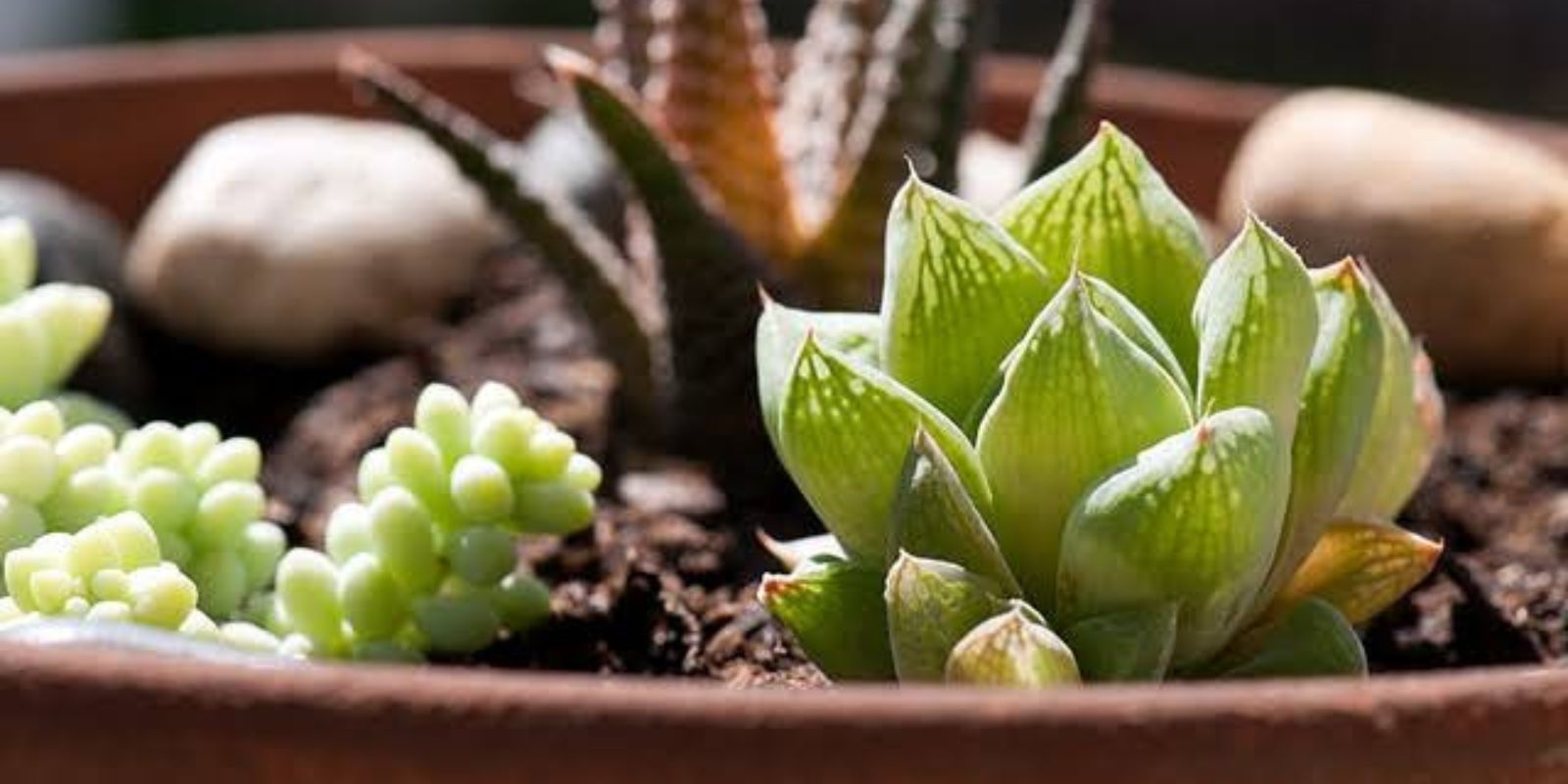Haworthias are charming succulents known for their compact size, striking rosette shape, and ease of care. Perfect for both beginners and experienced plant enthusiasts, these low-maintenance plants can be a delightful addition to your indoor or outdoor garden. This article provides a complete guide to cultivating and caring for Haworthias, ensuring they thrive in your home.
Understanding Haworthias: An Overview
Haworthias are native to South Africa and belong to the Asphodelaceae family. They are prized for their fleshy, triangular leaves often adorned with translucent windows or white stripes. These succulents are slow-growing and can adapt well to various environments, making them ideal for small spaces or indoor collections.
How to Cultivate and Care for Haworthias
1. Light Requirements
Haworthias thrive in bright, indirect light. While they can tolerate some direct sunlight, prolonged exposure may cause red or brown spots on their leaves, indicating stress.
- Ideal Placement: Near an east or north-facing window where sunlight is softer.
- Outdoor Care: If grown outdoors, place them in a partially shaded area to avoid scorching.
2. Soil Composition
Well-draining soil is crucial for Haworthias to prevent root rot. A mix specifically designed for succulents and cacti works best. Add a bit of clay or sand to improve drainage.
- DIY Mix: Combine two parts potting soil, one part sand, and one part perlite or pumice.
3. Watering Practices
Haworthias prefer to dry out between waterings. Overwatering is a common mistake, so it’s better to err on the side of caution.
- Frequency: Water when the top 1–2 inches of soil feel dry to the touch.
- Technique: Pour water directly onto the soil, avoiding the leaves to prevent fungal issues.
4. Temperature and Humidity
Haworthias are resilient but thrive in moderate temperatures.
- Optimal Range: 18–24°C (65–75°F).
- Winter Care: In colder months, move them to a cooler spot (10–12°C or 50–54°F) to mimic their natural dormant period.
5. Fertilization
Feed Haworthias during their active growing season (spring and summer) for healthy growth.
- Type: Use a low-nitrogen fertilizer specifically formulated for succulents or cacti.
- Frequency: Apply once a month, diluting the fertilizer to half its recommended strength.
6. Repotting and Propagation
Haworthias don’t require frequent repotting due to their slow growth.
- When to Repot: Every 2–3 years, preferably in spring.
- Propagation: Remove offsets (small plants growing at the base) during repotting and plant them in their pots to multiply your collection.
Common Problems and Solutions
1. Overwatering
Symptoms: Yellowing leaves, mushy texture, or root rot.
Solution: Allow the soil to dry out completely and adjust your watering schedule.
2. Sunburn
Symptoms: Red or brown spots on leaves.
Solution: Move the plant to a shadier location with indirect sunlight.
3. Pests
Haworthias are generally pest-resistant, but they may occasionally attract mealybugs or spider mites.
Solution: Remove pests manually with a cotton swab dipped in rubbing alcohol or use an insecticidal soap.
Why Choose Haworthias for Your Collection?
- Aesthetic Appeal: Their unique patterns and compact size make them a stylish choice for any decor.
- Low Maintenance: Perfect for busy individuals or beginners.
- Adaptability: Thrives in various conditions, including indoor settings with limited light.
Creative Display Ideas for Haworthias
- Terrariums: Showcase them in glass containers for a modern, minimalistic look.
- Succulent Arrangements: Combine Haworthias with other succulents for a vibrant centerpiece.
- Desk Plants: Place them in small pots on your desk for a touch of greenery.
Conclusion
Haworthias are a delight to grow and care for, with their unique beauty and minimal requirements. By providing the right environment, watering schedule, and occasional fertilization, you can enjoy a thriving collection of these charming succulents. Whether you’re a seasoned plant parent or a newbie, Haworthias make a rewarding addition to your home or garden.
💬 Do you have Haworthias in your collection? Share your care tips or questions below!
📌 #HaworthiaCare #SucculentLove #GardeningTips #IndoorPlants #PlantParenting

